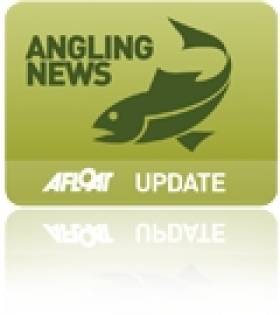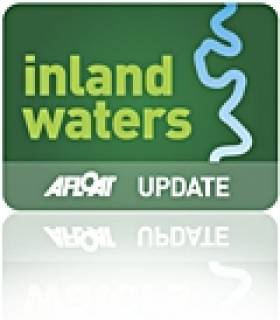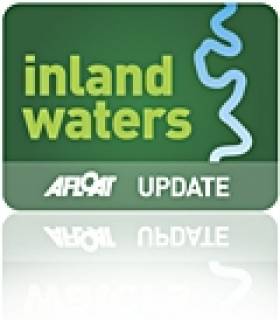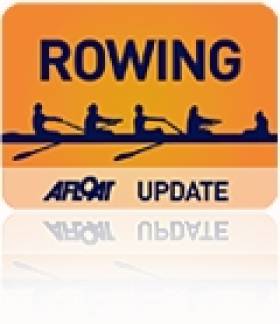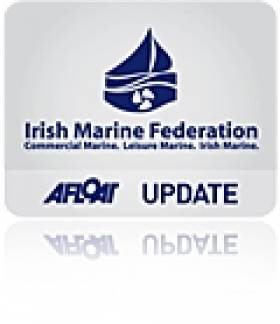Displaying items by tag: Erne
Angling Classic Among Items Auctioned from Hanna Collection
A 19th-century book on angling fetched €820 at an auction of bookseller Fred Hanna's private collection earlier this week, The Irish Times reports.
The classic title The Erne, Its Legends and Its Fly Fishing by the Rev Henry Newland exceeded its auction estimate of €500-€700 when it went under the hammer in Ballsbridge on Tuesday.
It was one of many rare books and other items that sold from the late bookseller's collection for a total of €350,000.
Other marine-related items included Lady Gregory's copy of JM Synge's The Aran Islands with drawings by Jack B Yeats, which sold for €12,000, and a first edition of Jame Joyce's Ulysses - much of which is set in the coastal suburb of Sandymount - which fetched €8,250.
Shannon-Erne Waterway to Reopen on April 1
Masters are requested by Waterways Ireland to give the parade a wide berth if not participating in it and to proceed at slow speed and with minimum wash when passing and to heed any advice offered by parade marshals.
Queen's and Portora Impress at Erne Head
Two men’s senior eights from Queen's University slotted into the first two slots at the Erne Rowing Head of the River at Enniskillen. The junior 18 quadruple of the host club, Portora, had a fine result, finishing joint eighth overall.
Erne Head of the River, Enniskillen
Overall: 1 Queen’s A men’s senior eight 19 minutes 53 seconds, 2 Queen’s B men’s senior eight 20:21, 3 University of Limerick/St Michael’s men’s senior eight 20:40, 4 Trinity men’s intermediate eight 20:59, 5 Bann men’s junior 18 eight 21:09, 6 Methodist College, Belfast men’s junior 18 eight 21:47.
Men, Eight – Senior: 1 Queen’s A 19:53, 2 Queen’s B 20:21, 3 University of Limerick/St Michael’s 20:40. Intermediate: Trinity 20:59. Novice: 1 Trinity 21:47, 2 Queen’s 22:38, 3 Queen’s B 24:51. Junior 18: 1 Bann 21:09, 2 Methody 21:47, 3 St Joseph’s 22:02. Junior 16: St Joseph’s 23:50. Masters: Belfast BC (E) 24:06.
Four/Quadruple Sculls – Senior: 1 Belfast RC (quadruple) 23:01, 2 LSC (quad) 24:45. Intermediate: 1 Trinity (quad) 22:17, 2 Queen’s (coxed four) 23:39, 3 University of Limerick (quad) 23:59. Junior 18: 1 Portora (quadruple) 22:02, 2 Commercial (quad) 22:51, 3 Portora (coxed four) 22:56. Junior 16: Bann (quad, coxed) 24:05.
Women, Eight – Senior: 1 Trinity 23:42, 2 NUIG 23:51. Intermediate: 1 Queen’s 23:45, 2 Trinity 26:02, 3 Methody 26:16. Novice: 1 Queen’s 25:07, 2 Trinity A 26:29, 3 Trinity B 26:40. Junior 18: 1 St Michael’s 24:41, 2 Portora A 27:24. Masters: Belfast BC (D) 25:39
Four/Quadruple – Senior: 1 Portora (quadruple) 24:32, 2 Trinity (coxed four) 27:28, 3 Garda 28:11.
Click this link for Irish Rowing detailsClick this link for the Latest Rowing News
Angler Rescued from Lough Erne
The man who is on holiday in the area was out angling on Lough Erne in his 2.4 metre open boat, when he got into difficulty and ended up in the water. His boat which was powered by an electric outboard hit ice on the lough and the man who is in his 30's ended up in the water.
He managed to get himself out of the water and made it safely ashore to a small island called Belle Island which is in the upper Lough Erne, County Fermanagh.
Belfast Coastguard called out Erne Coastguard Rescue team, requested the launch of Carrybridge RNLI inshore lifeboat and scrambled the Irish Coastguard rescue helicopter R -118.
The man who was well equipped for angling is suffering the effects of the cold water and sub zero temperatures.
He has been recovered by the Carrybridge lifeboat from a remote and inaccessible part of the island and taken to his accommodation on the Island to warm up.
Steve Carson, Watch Manager, Belfast Coastguard said:
This man was fortunate in this incident.
Unfortunately, with the adverse weather that we are experiencing, people are still taking unnecessary risks. The weather and the forecasted weather has been widely publicised in the media. In past years when this Lough has frozen, we have had calls about people venturing onto the ice, on foot and in vehicles. This is madness, and will end up in disaster if people do not heed the warnings.
Please do not place yourself at risk anytime, but with the extreme weather we are experiencing, that message is highly important.
Dublin Boat Show Goes Afloat
The 2011 Dublin Boat Show is going on the water in 2011 if a new approach to promote boating in Ireland takes off. The Irish Marine Federation (IMF) aims to include as many boating activities as possible in the national boat show line up next May in Malahide.
An attendance of up to 17,000 are expected at the Malahide marina venue from May 20 to 22. It will be the first time the national event has taken to the water in its 50 year history.
The world's biggest boat builders Beneteau, Jeanneau, Sea Ray and Sunseeker among others have already signed up for the North Dublin event, according to the IMF.
The organisers are partnering with leading Irish boating organisations to demonstrate the many different aspects of the sport on the water with a weekend schedule of live commentary.
BJ Marine, MGM Boats, Western Marine, HM Yachts in Cork and Viking marine of Dun Laoghaire and Shannon Castle Line in County Clare are among the first of the Irish firms to express interest in the new format as exhibition details circulate through the industry this week.
The aim is to get as many class associations on the water as well as small powerboat racing such as Zzapcats, kayaking and match racing fans to stage short, sharp events on the estuary directly in front of the marina. A timetable of events will be published shortly.
Coastguard and Lifeboat demonstrations are also planned. Technical demonstrations such as glass fibre repairs and engine maintenance are also in the line up.
Despite the coastal setting Ireland's Inland waters will feature prominently too through the Irish Boat Rental Association who will be promoting holidays on the river Shannon and Erne.
Visitors are also expected from Wales and across the Irish Sea region and special offers to both show-goers and exhibitors are being made through an Irish Sea InterReg programme.
The Malahide exhibition site will feature a marine village ashore with over 500 square meters of undercover exhibit space. Show goers will get the chance to talk to the leading lights in the sport before going afloat on the marina where over 100 berths will be available.
"It's a pretty unique site that gives us the best chance to show off the marine leisure industry afloat and ashore. Because its just off the M50 and M1 motorways it means it's also so easy to get to from anywhere in the country. This will be a great day out." said the Federation's Steve Conlon.
More information from Steve Conlon on 087 6472746. Updates here on afloat.ie as the show takes shape.


























